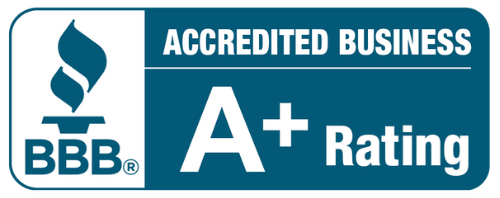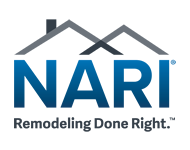When planning a design remodel or home renovation, one of the most important decisions you’ll make is selecting the right materials. The materials you choose can impact the look, durability, and functionality of your space, so it’s essential to weigh the pros and cons of each option carefully. Whether you’re updating your kitchen, bathroom, or living spaces, this guide will help you understand the materials available and which ones might work best for your project.
At KC’s Improvement, serving Greensboro and the Triad area, we specialize in helping homeowners make informed decisions on materials that suit their style, budget, and lifestyle. Let’s dive into the top materials used in home remodels and their advantages and disadvantages.
1. Hardwood
Popular for: Flooring, cabinetry, trim, and furniture.
Pros:
- Aesthetic Appeal: Hardwood adds warmth and natural beauty to any space. It’s available in a wide variety of grains, finishes, and stains, making it versatile for various interior design styles.
- Durability: When maintained properly, hardwood can last for decades and withstand high-traffic areas.
- Increases Home Value: Hardwood is often seen as a premium material that can increase a home’s resale value.
Cons:
- Cost: High-quality hardwood can be expensive, both in terms of material and installation.
- Maintenance: Hardwood can be prone to scratches and water damage, requiring regular sealing and upkeep to maintain its appearance.
Best for: Living rooms, dining rooms, and bedrooms where you want a classic, timeless look.
2. Engineered Wood
Popular for: Flooring and cabinetry.
Pros:
- Affordable Alternative: Engineered wood offers the look of hardwood at a lower price point.
- Moisture Resistant: It’s more resistant to warping and moisture than solid wood, making it ideal for humid environments.
- Wide Range of Styles: Available in many finishes and styles that mimic the appearance of solid wood.
Cons:
- Limited Lifespan: While durable, it doesn’t last as long as hardwood and can’t be refinished as often.
- Not as Authentic: Some homeowners feel engineered wood lacks the prestige and authenticity of solid wood.
Best for: Homes with kids or pets, or budget-conscious renovations in high-traffic areas.
3. Tile (Ceramic, Porcelain, Stone)
Popular for: Bathrooms, kitchens, backsplashes, and flooring.
Pros:
- Waterproof: Tile is highly resistant to water, making it ideal for bathrooms, kitchens, and outdoor spaces.
- Durability: Porcelain and ceramic tiles are incredibly durable and can withstand heavy use without scratching or wearing down.
- Design Flexibility: Tile comes in endless patterns, colors, and shapes, allowing you to create unique designs that fit your personal style.
Cons:
- Cold and Hard Surface: Tile can feel cold underfoot and is not ideal for living areas unless paired with radiant floor heating.
- Grout Maintenance: Grout can stain over time and requires regular cleaning and sealing to maintain its appearance.
Best for: Kitchens, bathrooms, entryways, and areas where moisture is a concern.
4.  Natural Stone (Granite, Marble, Quartz)
Natural Stone (Granite, Marble, Quartz)
Popular for: Countertops, backsplashes, fireplaces, and flooring.
Pros:
- Luxury Appearance: Stone like granite or marble adds a high-end, luxurious look to kitchens and bathrooms.
- Durability: Granite and quartz are very hard and resistant to scratches, stains, and heat, making them perfect for high-use areas.
- Unique: Each piece of stone is unique, offering natural patterns and color variations that can’t be replicated.
Cons:
- High Maintenance: Marble, in particular, is porous and can stain easily, requiring regular sealing and maintenance. Granite also needs periodic resealing.
- Cost: Natural stone tends to be one of the more expensive materials available.
Best for: Kitchen countertops, bathroom vanities, and high-end interior design projects.
5. Laminate
Popular for: Flooring and countertops.
Pros:
- Budget-Friendly: Laminate is one of the most affordable materials, offering a great solution for homeowners on a budget.
- Easy to Install: It’s typically easier to install than many other materials, making it a good option for quick remodels.
- Scratch Resistant: Laminate is highly resistant to scratches, dents, and stains, making it ideal for homes with pets or kids.
Cons:
- Artificial Appearance: While laminate can mimic the look of wood or stone, it doesn’t have the same authentic feel or durability.
- Limited Lifespan: Laminate can wear out faster than hardwood or tile and may need to be replaced sooner, especially in high-traffic areas.
Best for: High-traffic areas like kitchens and playrooms, or as an affordable countertop alternative.
6.  Concrete
Concrete
Popular for: Countertops, floors, and accent walls.
Pros:
- Durability: Concrete is extremely strong and can withstand heavy use, making it ideal for floors and countertops.
- Customizable: Concrete can be stained, stamped, or polished for a wide range of looks, from industrial chic to sleek and modern.
- Heat Resistant: It’s highly heat-resistant, making it an excellent option for countertops or fireplaces.
Cons:
- Heavy: Concrete is heavy and may require additional support in your home’s structure, which can add to the installation cost.
- Prone to Cracking: Despite its durability, concrete can crack over time, especially if not installed properly.
- Maintenance: It requires sealing to prevent staining and to protect its surface.
Best for: Modern and industrial-style homes, especially kitchens and bathrooms.
7. Bamboo
Popular for: Flooring and cabinetry.
Pros:
- Sustainable: Bamboo is a rapidly renewable resource, making it an eco-friendly choice for homeowners who prioritize sustainability.
- Durable: When properly treated, bamboo is highly durable and can be as strong as hardwood.
- Unique Look: Bamboo offers a modern, clean look that fits well in contemporary and minimalist designs.
Cons:
- Moisture Sensitivity: Bamboo is susceptible to moisture and can warp if exposed to too much water, so it’s not ideal for bathrooms or kitchens.
- Limited Style Options: Bamboo doesn’t offer as much variety in color or grain compared to traditional hardwood.
Best for: Living areas and bedrooms in eco-conscious homes.
8.  Recycled Materials
Recycled Materials
Popular for: Countertops, flooring, and accent features.
Pros:
- Eco-Friendly: Using recycled materials reduces waste and lowers the environmental impact of your remodel.
- Unique Aesthetic: Recycled materials, like reclaimed wood or recycled glass countertops, often offer one-of-a-kind designs.
- Durability: Many recycled materials, like reclaimed wood, are surprisingly durable and can often last longer than new materials.
Cons:
- Cost: Recycled or reclaimed materials can sometimes be more expensive due to their uniqueness and sourcing requirements.
- Inconsistent Quality: Reclaimed materials can vary in quality, requiring extra care in selection and installation.
Best for: Homeowners who prioritize sustainability and want to add unique, environmentally conscious elements to their home.
Conclusion
Choosing the right materials for your design remodel project is key to achieving the look, durability, and functionality you desire. Whether you’re focused on high-end luxury, sustainability, or budget-conscious options, there are plenty of material choices that can suit your needs. At KC’s Improvement, we work closely with our clients in Greensboro and the Triad area to ensure that every material selected fits their lifestyle, design vision, and budget.
Ready to start your next home remodel? Contact us today or visit us at https://kcsimprovement.com to discuss your project with our expert general contractor team and explore the best materials for your space!
https://www.facebook.com/KCsImprovement
Data compiled by Keith A Crabtree




 Natural Stone (Granite, Marble, Quartz)
Natural Stone (Granite, Marble, Quartz)
 Concrete
Concrete
 Recycled Materials
Recycled Materials
